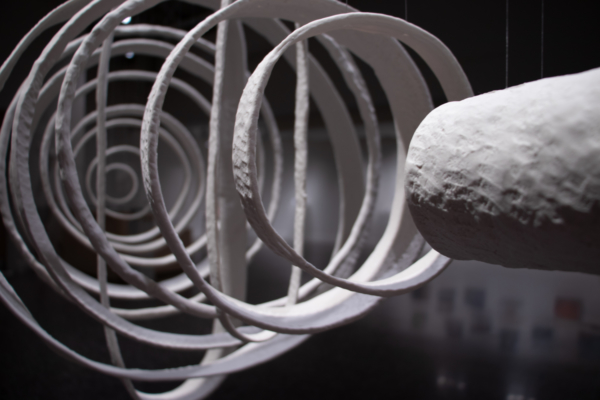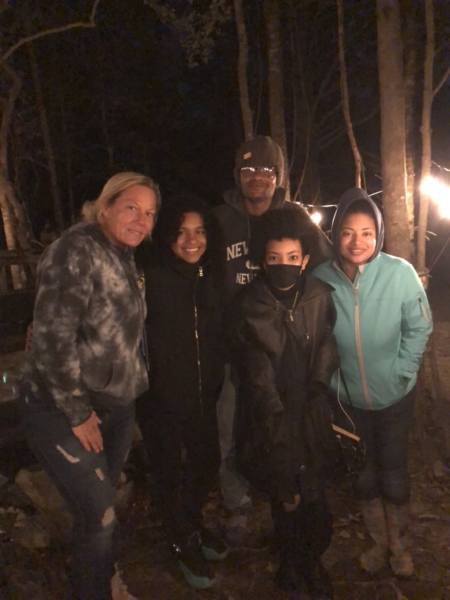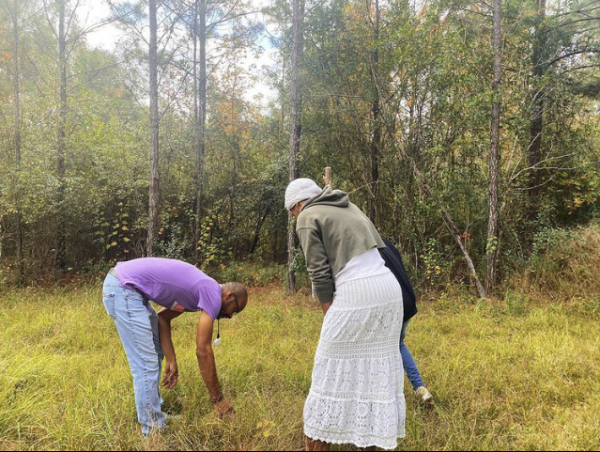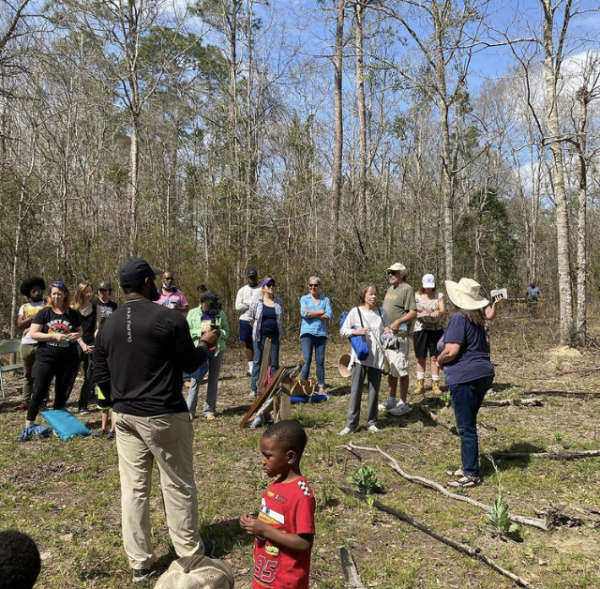
Later this week, our first artist-in-residence, Hee Joo Yang’s piece will be deinstalled and will become a part of our permanent collection. Hee Joo was our first artist-in-residence last summer and worked at the City of Biloxi’s Center for Ceramics on our campus to create her exhibition, The Caves. Originally from Seoul, Korea, this was Hee Joo’s first time in the South and while she was here, she experienced her first hurricane! We caught up with her to ask her about the residency and her time at the Ohr-O’Keefe Museum of Art.
How did you get interested in ceramics? What attracted you to making things out of
clay?
Ceramics was the major I chose when I entered university in Korea. So, at first, I was completely unaware of it. However, I got interested when I started learning wheel throwing and hand building. It was fun to do both, each of them having their own unique texture, even while using the same clay. And more than anything else, it was essential to experience how I love all the processes of making a shape with my own hands and firing it in a kiln.
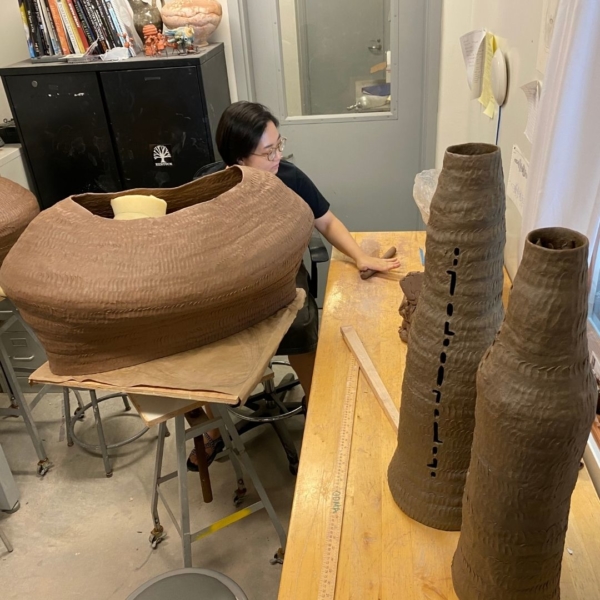
What was your residency like at the Ohr-O’Keefe Museum of Art? Were you here
for the hurricane?
This was my first residency and I was honored that the museum selected me as the first residency artist. Of course, there is going to be rain and wind wherever I go, but I never expected it to be a hurricane. While my clay was locked-up in Florida, I had a rewarding time coming up with ideas for making and collecting materials to use for the sound work. Most of all, I was fascinated by the Frank Gehry buildings called ‘The Pods.’ I worked hard for a short period to fill that space with my work. The many people I met at the studio were kind and supported the work I wanted to do so I could happily work.
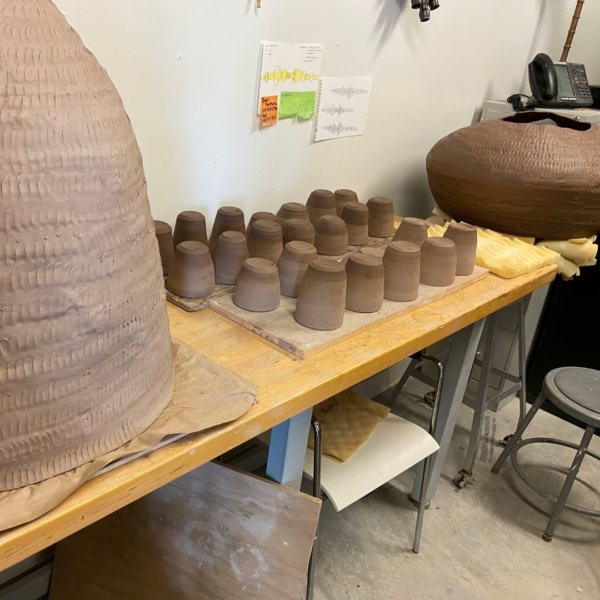
What was your favorite part about Biloxi and making work in the South?
As it was my first visit to the South of the United States, I had high expectations. And the natural scenery of Biloxi perfectly lived up to those expectations. I was able to see such a beautiful beach every day, and the ever-changing sky and sea were amazing. However, since it was an area that was heavily damaged by a natural disaster, I was able to experience the scars that remain even after a lot of time had passed. Nevertheless, the power necessary to overcome it all and create a wonderful place to live in once again, was what motivated me to work with the hurricane I experienced.
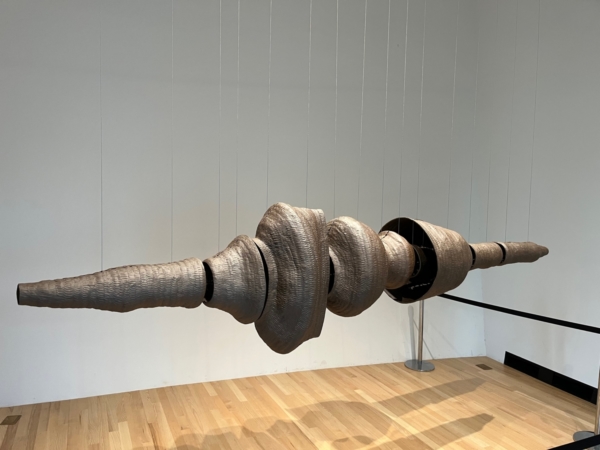
How did your experience with partial deafness inform the fabrication of The Caves?
Partial deafness sometimes misses a lot. In addition, there are many things to be taken care of in daily life, so fatigue quickly builds up. Such tiredness makes me mentally and physically exhausted. In Korea, we often use the expression ‘going into the cave’ when we are in such a tired state. It has a negative meaning in a certain way as it cuts off all relationships and I disappear into time alone.
However, I thought of this cave as a healing space for myself. And I asked myself, what sounds did I hear from where I am now? I wanted to share an experience with myself or the audience exploring the unknown cave space while asking and answering questions about how it influenced me.
What are you working on right now?
Now I am examining ways of understanding myself through objects by focusing on giving form to invisible embodiments of states like emotions, memories, and experiences. This allows me to explore the circumstances surrounding me and ask: Where do I get inspiration from? What do I hear and feel? How do I process the memories of everything I have been through? Exploring these unshaped things in my studio work allows me to give form to my accumulated experience over time. This work synthesizes and catalogs my relationship with myself through the objectification of invisible things.
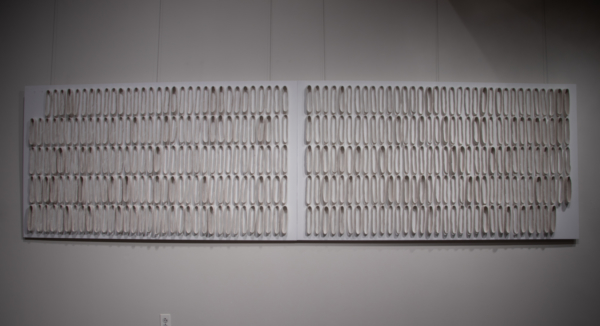
George Ohr was known as the mad potter of Biloxi, if you were going to give yourself a nickname based off of your work, what would it be?
Based on my work, I would like the nickname ‘Sound Searcher.’ Because sound is an inseparable sense from my life and work, it also gives me a lot of inspiration. I reinterpreting the sounds I have experienced and heard. Also, trying to visualize them with clay is one
of my important work methods. So, it can be said that this nickname is my own way of collecting and researching sounds.
